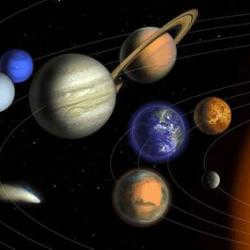
Science
We have all been aware since our early years that the Sun is situated at the core of our solar system, with the four closest planets to Earth – Mercury, Venus, Earth, and Mars – revolving around it. Subsequently, we have the four gas giant planets: Jupiter, Saturn, Uranus, and Neptune.
Since Pluto was reclassified as a dwarf planet in 2006, the total number of major planets in our solar system has been reduced to eight.
While the basic structure of the solar system is well-known, there exist numerous myths and misconceptions surrounding it.
Here are ten lesser-known facts about the solar system.
1. The planet closest to the Sun is not the hottest one
Most people are aware that Mercury is the planet closest to the Sun, with a distance that is almost half the distance from Earth to the Sun. It is therefore understandable that many people assume Mercury is the hottest planet.
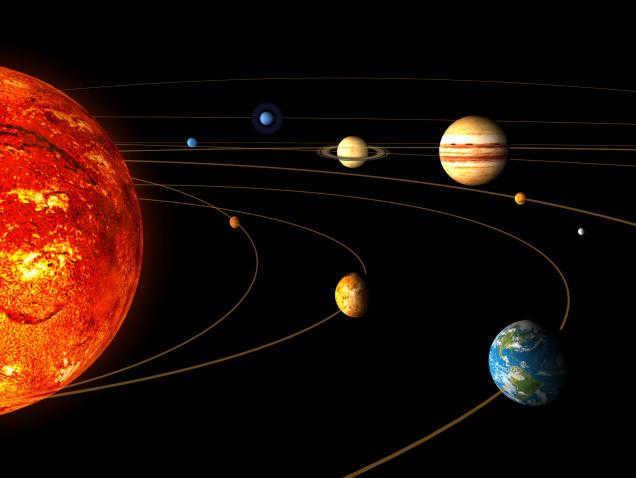
As a matter of fact, Venus is the hottest planet in our solar system. It is the second planet closest to the Sun and has an average temperature of 475 degrees Celsius. This extreme heat is enough to melt tin and lead. In comparison, the maximum temperature on Mercury is around 426 degrees Celsius.
However, the surface temperature of Mercury can vary by hundreds of degrees due to its lack of atmosphere. In contrast, the presence of carbon dioxide on Venus creates a nearly constant temperature on its surface throughout the day and night.
In the past, it was believed that the solar system reached as far as the orbit of Pluto. Nowadays, Pluto is no longer classified as a significant planet, yet this concept has persisted in the thoughts of numerous individuals.
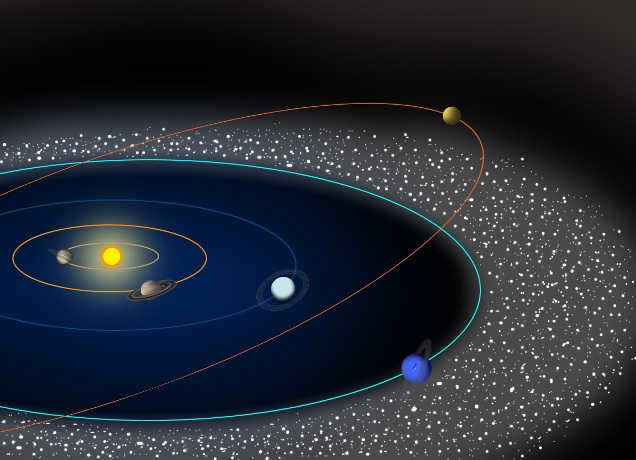
Astronomers have made a remarkable discovery of numerous celestial bodies in orbit around the Sun that exist at distances much greater than that of Pluto. These fascinating entities are commonly referred to as transneptunian or Kuiper belt objects. The Kuiper Belt, extending approximately 50-60 astronomical units (an astronomical unit being the average distance between the Earth and the Sun, roughly 149,597,870,700 meters), is home to these extraordinary objects.
However, even more distant than the Kuiper Belt lies the vast and ethereal Oort cloud, stretching an astonishing 50,000 astronomical units from the Sun, which equates to about half a light year. To put this in perspective, the Oort cloud is a thousand times farther away from the Sun than Pluto.
3. Almost everything on Earth is composed of unique elements
The majority of Earth’s composition consists of iron, oxygen, silicon, magnesium, sulfur, nickel, calcium, sodium, and aluminum.
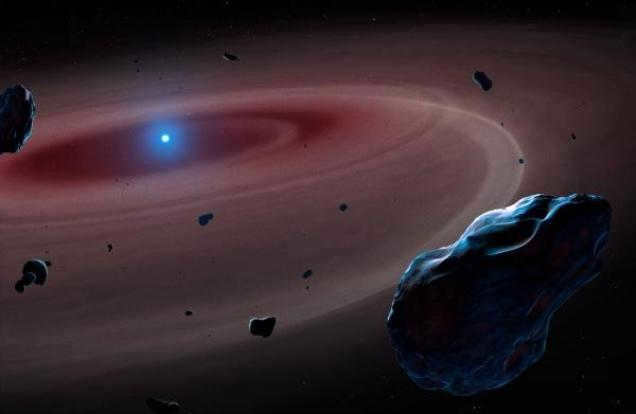
While these elements have been discovered in different parts of the cosmos, they exist only in small quantities compared to the abundance of hydrogen and helium. As a result, the Earth is primarily composed of rare elements. This fact does not imply that Earth holds a unique position in the universe, as the cloud from which it formed contained significant amounts of hydrogen and helium. However, due to their lightweight nature, these gases were expelled into space by the sun’s heat during the formation of the Earth.
Initially, Pluto was classified as a planet, but due to its significantly smaller size compared to our Moon, it was reclassified as a dwarf planet. Additionally, astronomers previously speculated the existence of a planet named Vulcan, believed to be located closer to the Sun than Mercury. This hypothesis was proposed 150 years ago to account for certain characteristics of Mercury’s orbit. However, subsequent observations have disproven the existence of Vulcan.
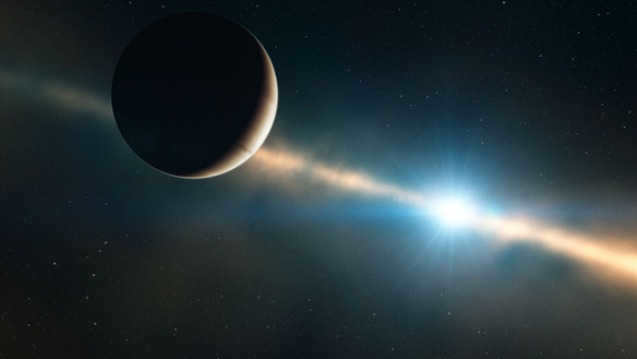
Furthermore, recent studies indicate the possibility of the existence of a fifth colossal planet in the past. This planet, similar to Jupiter, used to revolve around the Sun but was eventually expelled from the solar system as a result of gravitational interactions with other planets.
5. Jupiter boasts the most extensive planetary ocean among all celestial bodies
Jupiter, with its frigid orbit that lies five times farther away from the Sun compared to Earth, managed to retain significantly larger quantities of hydrogen and helium during its formation in comparison to our home planet.
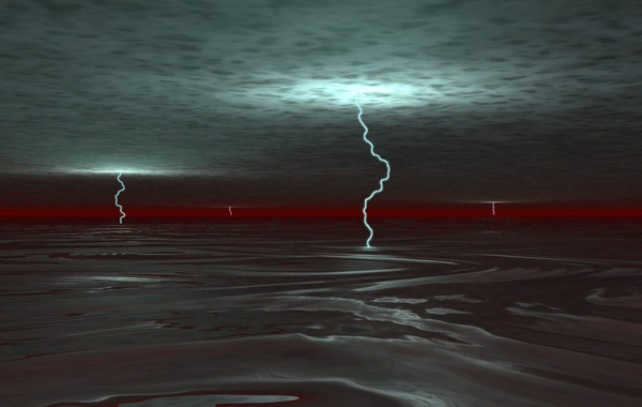
One could argue that the majority of Jupiter consists of hydrogen and helium. Considering the planet’s mass and chemical makeup, along with the principles of physics, it is expected that hydrogen would transition into a liquid state under the cold clouds due to increased pressure. Therefore, Jupiter is thought to possess the most profound liquid hydrogen ocean.
Based on computer simulations, this planet not only boasts the largest ocean in the entire solar system but also has a depth of approximately 40,000 kilometers, equivalent to the Earth’s circumference.
6. Even tiny objects in the solar system possess satellites
In the past, it was believed that only sizable entities like planets had the ability to possess natural satellites or moons. The presence of satellites is occasionally utilized to define what qualifies as a planet. It may seem contradictory that small celestial bodies can exert enough gravitational force to retain a satellite. After all, Mercury and Venus lack satellites entirely, and Mars only boasts two minuscule satellites.
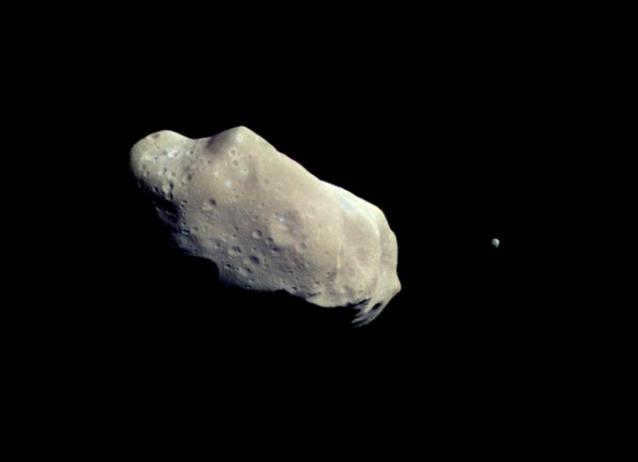
In 1993, the interplanetary station Galileo made a groundbreaking discovery when it found the satellite Dactylus, measuring a mere 1.6 kilometers in width, orbiting the asteroid Ida. This discovery opened up a whole new realm of possibilities, as satellites have since been found orbiting around approximately 200 other small planets. As a result, the definition of a “planet” has become increasingly complex.
Typically, we associate the Sun with a massive, luminous sphere located 149.6 million kilometers away from our planet. However, the truth is that the Sun’s outer atmosphere actually stretches well beyond its observable outer layer.
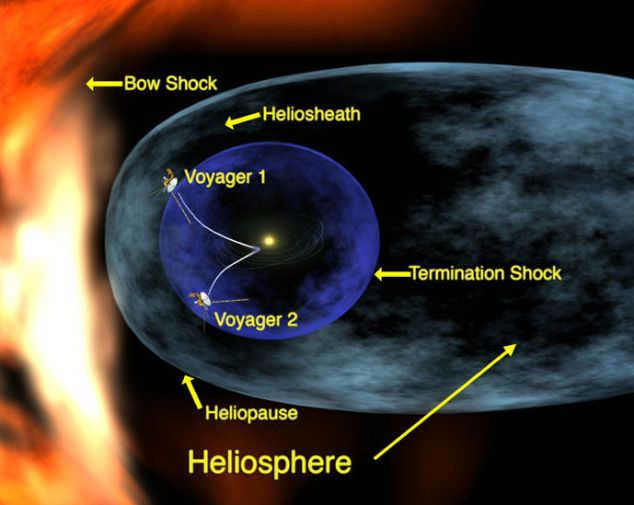
Our planet revolves within its thin atmosphere, and we witness this phenomenon when bursts of solar wind create the mesmerizing aurora borealis. In this aspect, we inhabit the inner realms of the Sun. However, the Sun’s atmosphere does not terminate at Earth. The aurora borealis can also be observed on Jupiter, Saturn, Uranus, and even the distant Neptune. The outermost limits of the Sun’s atmosphere, known as the heliosphere, extend to a minimum of 100 astronomical units, which equates to approximately 16 billion kilometers. Nevertheless, due to the Sun’s movement in space, the atmosphere takes on a teardrop shape, allowing its tail to stretch from a dozen to a hundred billion kilometers.
8. Other Planets with Rings
While Saturn is known for its stunning and easily observable rings, it is not the only planet in our solar system with this feature. In fact, Jupiter, Uranus, and Neptune also possess rings of their own. While Saturn’s rings are bright and composed of icy particles, Jupiter’s rings are much darker and primarily made up of dust particles. Additionally, Jupiter’s rings may contain small fragments from broken-up meteorites and asteroids, as well as particles originating from its volcanic moon, Io.
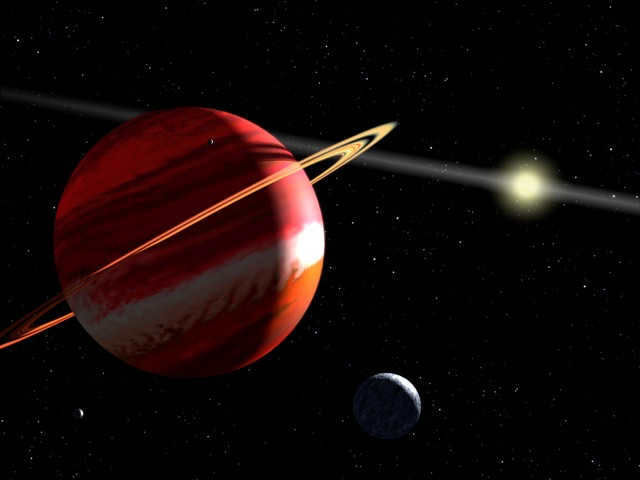
The ring system of Uranus is slightly more visible than that of Jupiter and may have originated from the collision of small satellites. The rings of Neptune are faint and dark, similar to those of Jupiter. Unfortunately, the faint rings of Jupiter, Uranus, and Neptune are not visible through small telescopes from Earth, which is why Saturn is most famous for its rings.
9. Titan: A Unique Satellite with an Earth-like Atmosphere
Contrary to popular belief, there exists a celestial body within our solar system that possesses an atmosphere remarkably similar to that of Earth. Titan, the satellite of Saturn, is the extraordinary object in question. Towering above our Moon and rivaling the size of the planet Mercury, Titan stands out as a fascinating anomaly. While the atmospheres of Venus and Mars differ significantly from Earth’s, with one being considerably denser and the other much thinner, Titan’s atmosphere stands apart as predominantly composed of nitrogen.
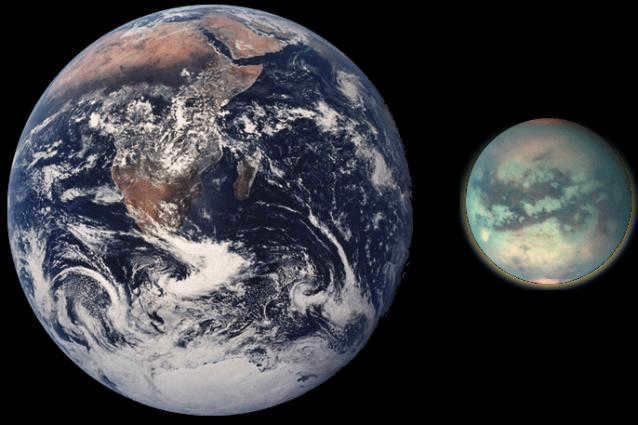
The composition of Earth’s atmosphere is primarily nitrogen, making up about 78 percent of its total. The resemblance to Earth’s atmosphere, along with the existence of methane and other organic compounds, has led scientists to speculate that Titan may serve as a model for early Earth or potentially harbor some form of biological activity. As a result, Titan is regarded as the prime location in our solar system for the exploration of potential signs of life.
By conducting chemical analysis on meteorites discovered in various locations such as Antarctica and the Sahara Desert, scientists have determined that these rocks originate from Mars. One intriguing piece of evidence is the presence of gas bubbles in some meteorites that exhibit a chemical composition resembling that of the Martian atmosphere.
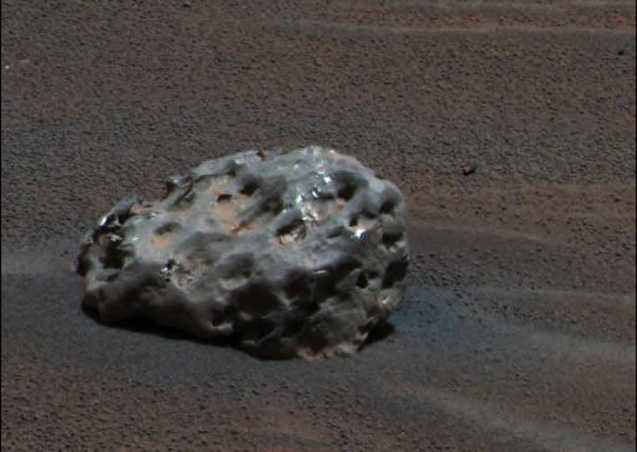
It is possible that these meteorites were dislodged from Mars as a result of a collision with a larger meteorite or asteroid, or following a significant volcanic eruption.
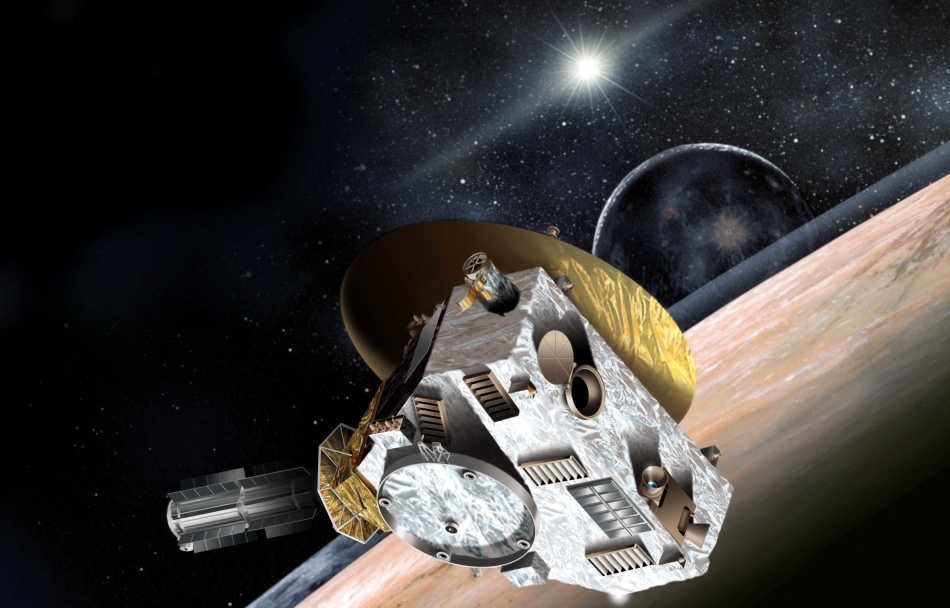
This week, there is an exciting event happening – for the very first time, a vehicle from Earth will be passing by Pluto. On July 14th, the New Horizons probe will come within a distance of only 12,500 km from the dwarf planet. However, due to the long distance, the data transfer rate will be limited to about 1 kilobit per second, which means that it will take months for all the data to be transmitted back to us. Unfortunately, there will not be a live online broadcast of the flyby, but that’s not a problem. Thanks to a group of passionate enthusiasts, we can experience a virtual flyby of Pluto using the Orbiter space simulator, allowing us to get a glimpse of what the actual event might be like.
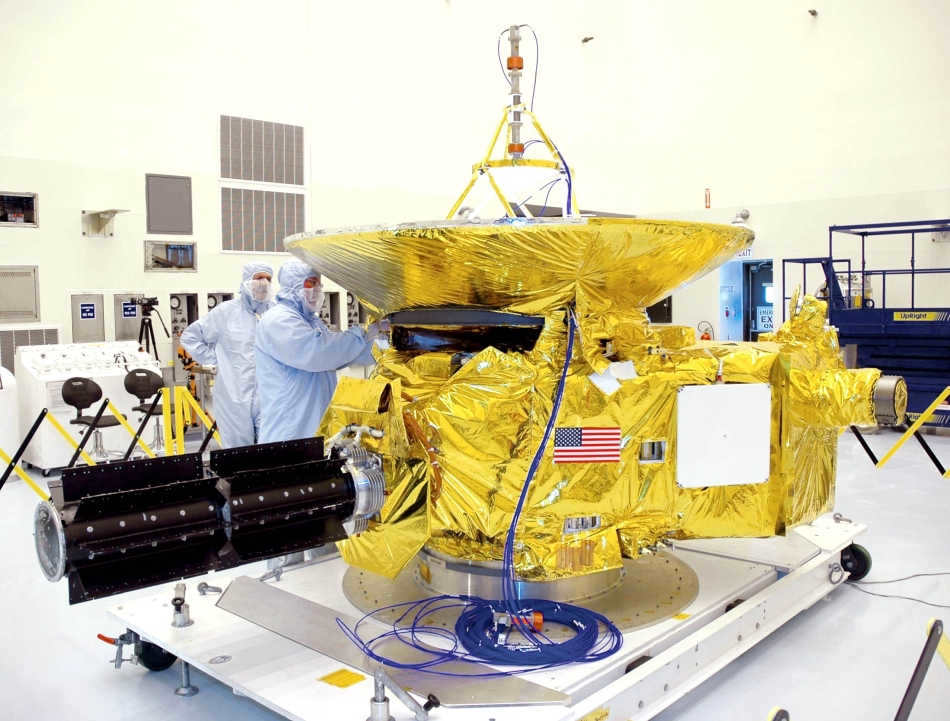
“New Horizons in the assembly and test facility”
The New Horizons spacecraft originally had a mass of 478 kg, with 77 kg dedicated to fuel (hydrazine) and 30 kg allocated for scientific equipment. Its power source is a RITEG containing 11 kg of plutonium-238. Upon its arrival at Pluto, the RITEG generated approximately 200 watts of power. The spacecraft is protected by a multi-layer heat shield made up of dacron, mylar, and kapton, which not only shields it from micrometeorites but also helps distribute the heat generated by the electronics. Louvers are present to regulate excess heat in the inner regions of the solar system, and if needed, heaters can be activated. The spacecraft is equipped with two low-gain antennas for short-range communication, as well as a medium-gain antenna and a high-gain antenna. Its propulsion system consists of 16 engines, divided into two groups of 8 for enhanced reliability. Each group includes two 0.5 kg thrust motors for trajectory correction and six 80 gram thrust motors for orientation. The onboard computer operates on a 12 MHz radiation-resistant processor and has an 8 GB SSD for storage. Both the computer and storage are redundant for added reliability. To determine its position in space, the spacecraft utilizes two star sensors, two solar sensors (which are redundant), and two inertial measurement units equipped with gyroscopes and accelerometers. The spacecraft’s orientation in space is controlled by the motors, and during its flight to the target, it maintains stability through rotation.
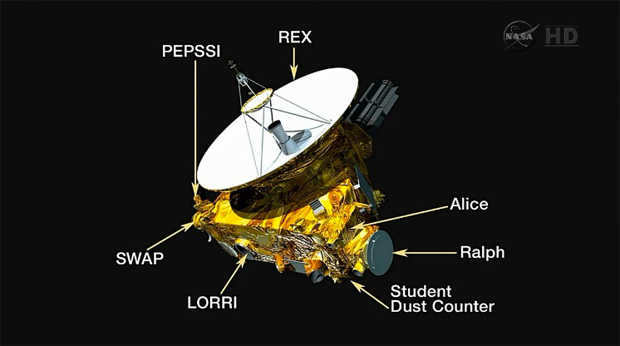
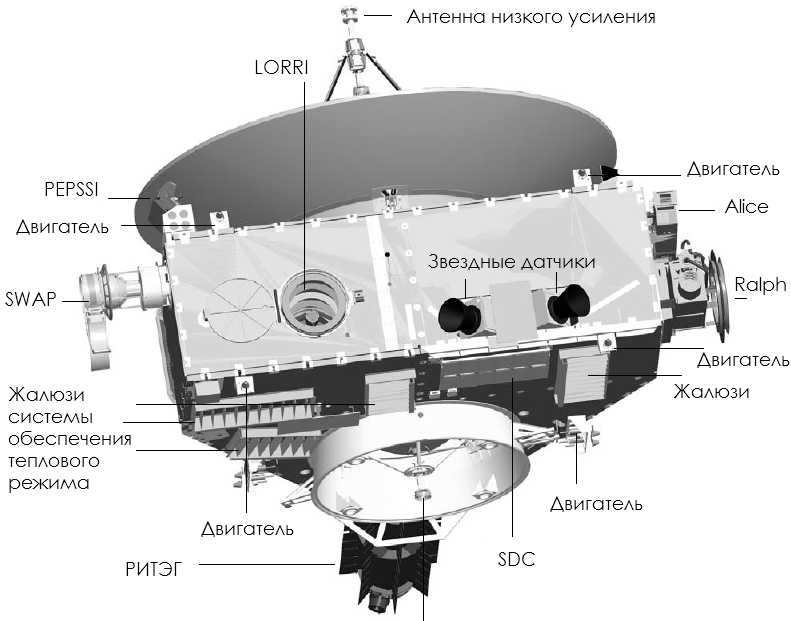
- Alice. The UV-band spectrometer is designed to determine the parameters of Pluto’s atmosphere. In atmospheric glow mode, it records the UV emissions of the atmosphere, while in eclipse mode, it analyzes the absorption spectrum of sunlight to determine the composition of the atmosphere. A modified version of this instrument is also present on the Rosetta probe.
- Ralph. This camera and spectrometer operates in the visible and infrared range. It provides black and white and color images of the surface, as well as stereo images for studying topography.
- LORRI. This visible-band telescope is used for long-range imaging and capturing detailed images of the surface. Initially, it was expected to have a resolution of 50m/pixel, but now they are estimating it to be 100m/pixel. Only time will tell what the final resolution will be.
- SWAP. The Solar Wind Analyzer is the largest instrument in its class because of the long distance between Pluto and the Sun.
- PEPSSI. The Energetic Particle Spectrometer complements SWAP and is able to capture particles with much higher energies.
- SDC. The Student Space Dust Detector captures the mass and velocity of particles that New Horizons encounters.
- REX. The high-gain antenna will be used for communication with Earth and also to study Pluto’s atmosphere in the radio band.
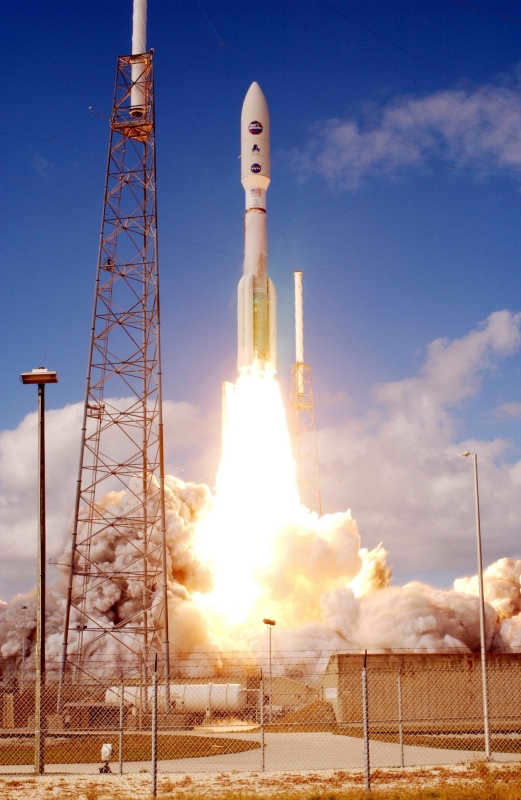
Approximately 100 seconds after liftoff, the initial stage side boosters separated, with up to five of them detaching. This launch utilized the heaviest variant of the Atlas V launch vehicle. Four and a half minutes later, the Russian RD-180 engines on the first stage powered down, and ten minutes later the second stage entered a reference orbit. Following a twenty-minute pause, the second stage engine reignited, propelling New Horizons to a speed of 12.4 kilometers per second. Next, the Star-48 solid-propellant upper stage took over. The probe and upper stage combination were spun up to 60 rpm, and after approximately 80 seconds of engine operation, New Horizons accelerated to 16 km/s relative to Earth. This remarkable achievement made New Horizons the first spacecraft to attain the third space velocity directly from Earth orbit, surpassing the Pioneers and Voyagers, which only achieved it after a gravitational maneuver near Jupiter.
An animation depicting the separation from the upper stage and subsequent flight
Jupiter flyby
In just one year, in February 2007, New Horizons completed a flyby of Jupiter, passing at a distance of 2.3 million kilometers (approximately 32 times the diameter of Jupiter), which resulted in a “free” velocity boost of 4 km/s through gravitational maneuvering. This flyby also shortened the spacecraft’s journey to Pluto by three years. The scientific instruments onboard New Horizons not only successfully tested the passage of a celestial body in a real scenario, but also gathered valuable data. Prior to this mission, no spacecraft had visited Jupiter’s vicinity since the Galileo mission concluded in 2003, and New Horizons’ instruments were significantly more advanced.
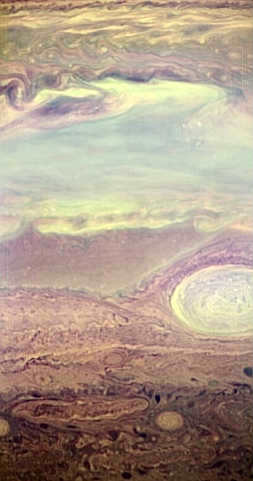
A unique perspective on the vast red spot
Witness the mesmerizing animation of the volcanic activity on Jupiter’s moon, Io
Exploring the Wonders of Pluto
Following its encounter with Jupiter, the New Horizons spacecraft entered a state of hibernation for several years. It successfully crossed the orbit of Saturn in June 2008, followed by Uranus in March 2011. Although certain instruments began operating earlier, the spacecraft fully “awoke” on December 6, 2014. Since then, we have been treated to a series of increasingly detailed photographs of Pluto and its moons:
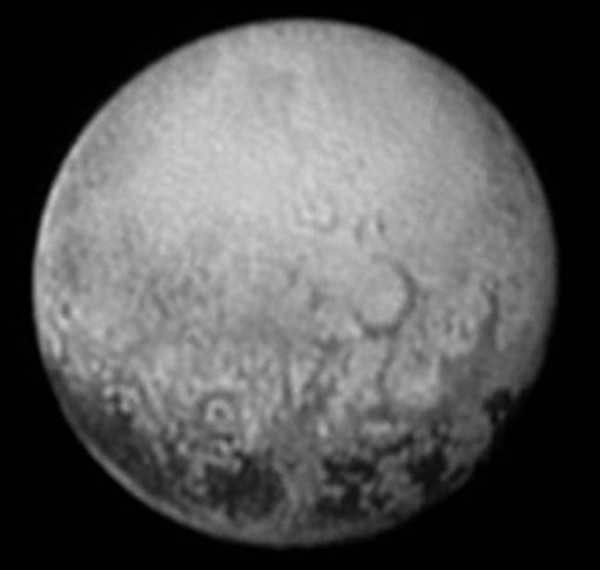
Pluto. The latest photo was taken on July 11
The flyby cyclogram is already known and can be accessed by downloading NASA’s Eyes app from the official website or by watching the recording on YouTube (preferably in full screen):
Planet9 = Pluto Pluto:Moon1 = Charon Pluto:Moon2 = Nix Pluto:Moon3 = Hydra
Replace the bars with the planet number. In my case, the last number was 8, so change ## to 9: 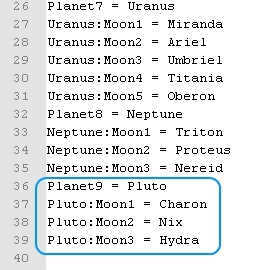
Run Orbiter. The script we need is called – New Horizons – Pluto Encounter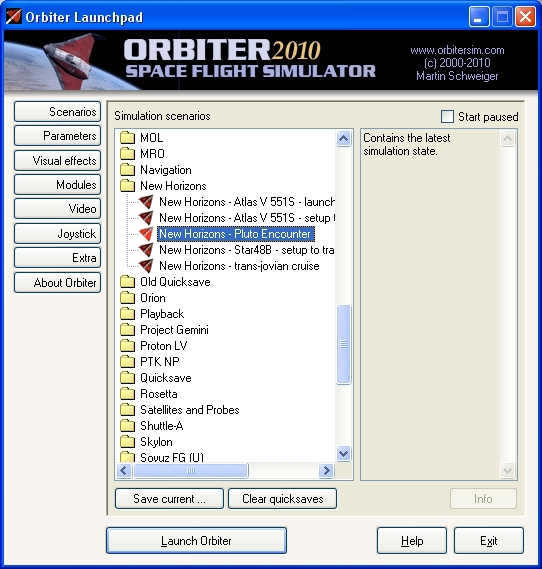
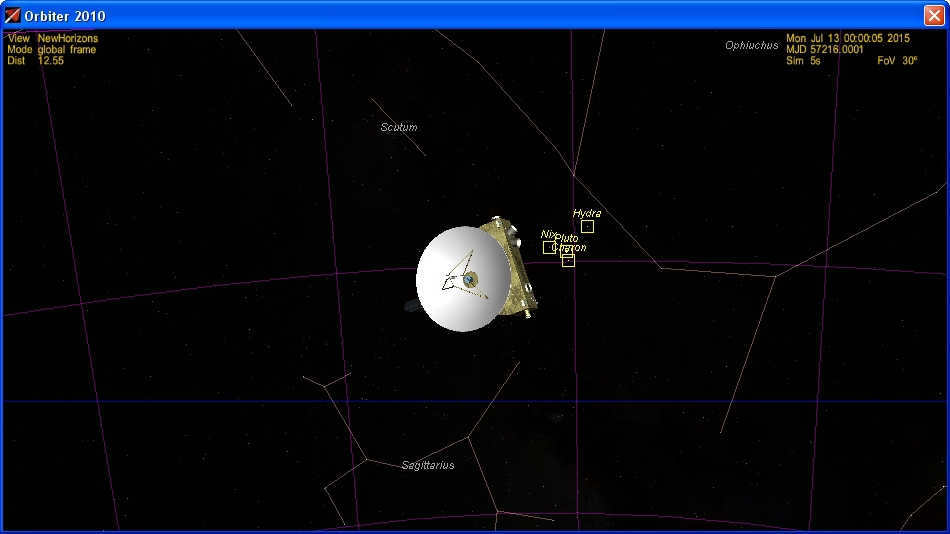
Hi, Pluto!
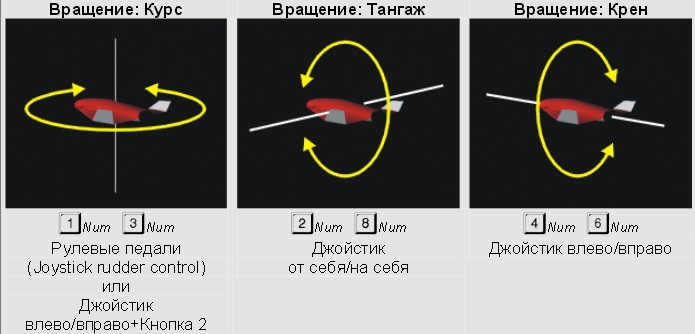
Keyboard controls:
- F1 – toggle between first and third person view.
- T – speed up time by 10 times, R – slow down.
- Orientation control keys:
And a very useful one Num 5 stops rotation in all axes.
- Z – decrease the field of view (bring the object closer), X – increase the field of view (move the object farther away)
- F9 – planetarium mode, with labeled names of objects and constellations.
- H – windshield indicator mode. Cycles through the Orbit/Surface/Docking modes.
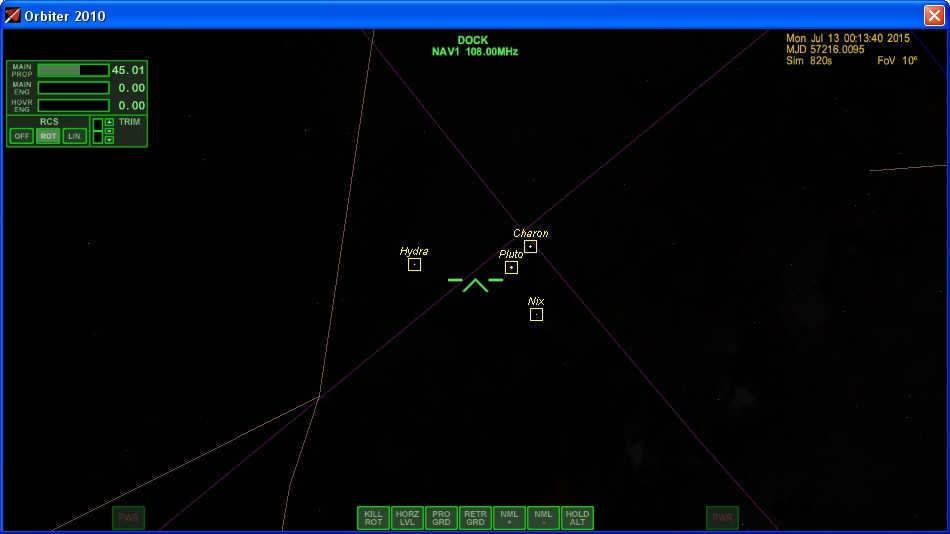
Pluto is within the range:
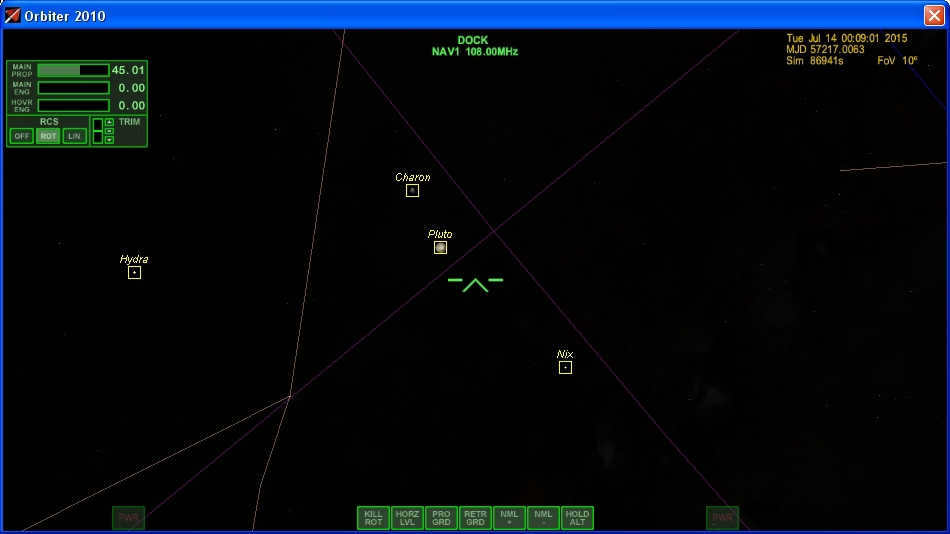
July 14:
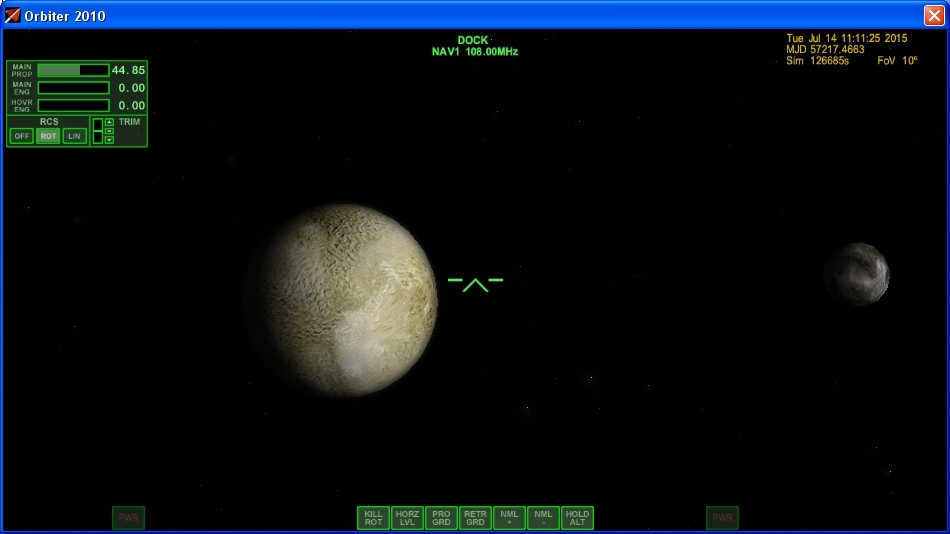
At 11:11 UTC, the close-up images of Pluto and Charon were taken, with less than an hour until they reached their closest point of approach.
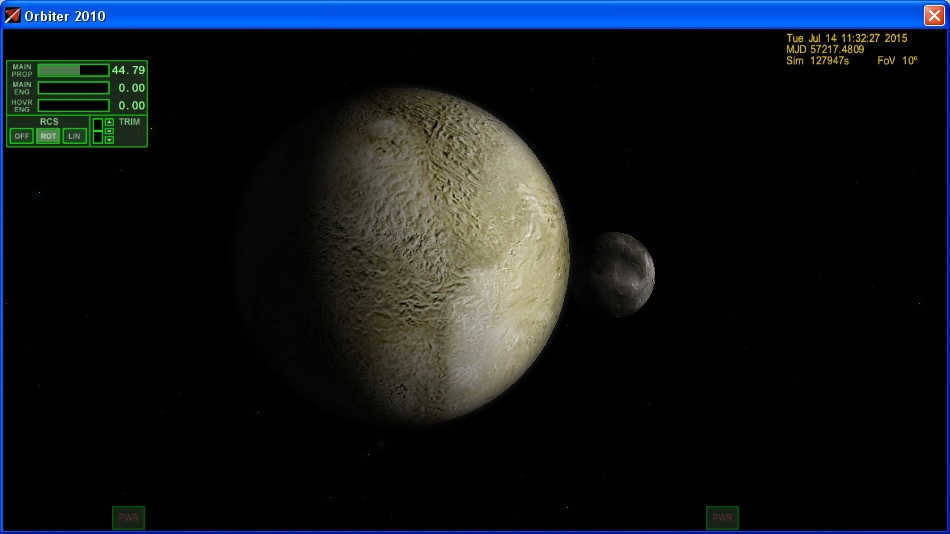
At 11:32 UTC, will New Horizons capture a similar image?
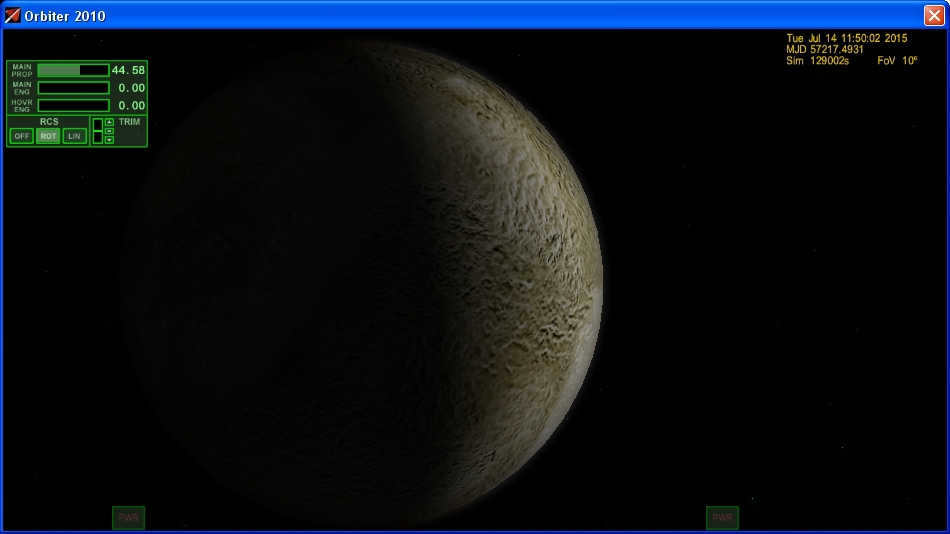
At 11:50 UTC (14:50 MOSCOW TIME), the maximum approach point has already moved beyond Pluto’s orbit. From this point onwards, it will appear as a crescent shape.
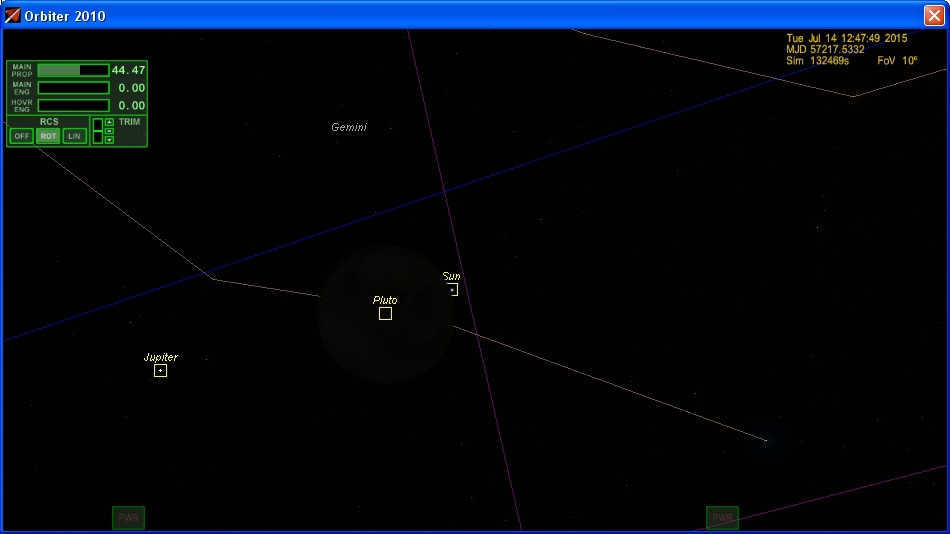
12:50 UTC (15:50 MOSCOW TIME). As we venture into the shadow of Pluto, the Alice spectrometer is poised to gather a wealth of fascinating information.
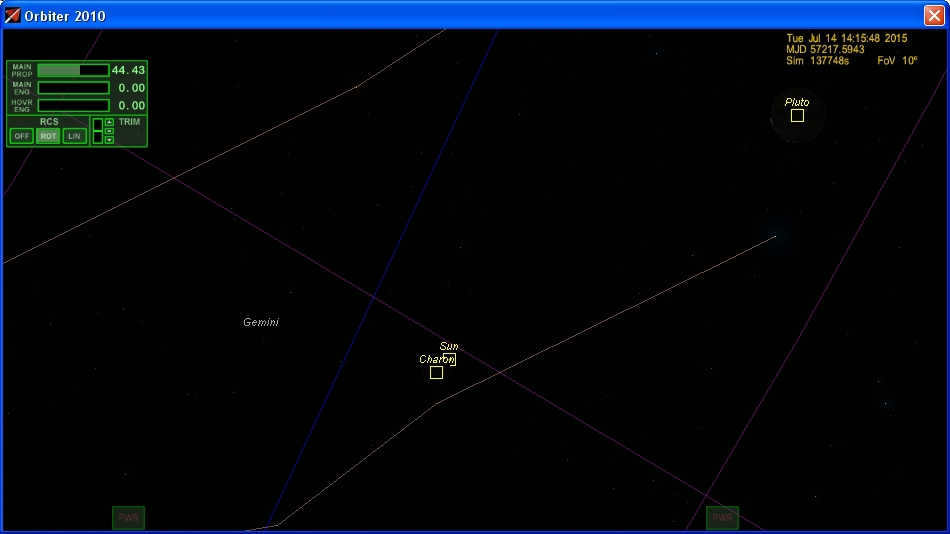
At 14:15 UTC (17:15 MOSCOW TIME), the spacecraft began to enter the shadow cast by Charon, Pluto’s largest moon.
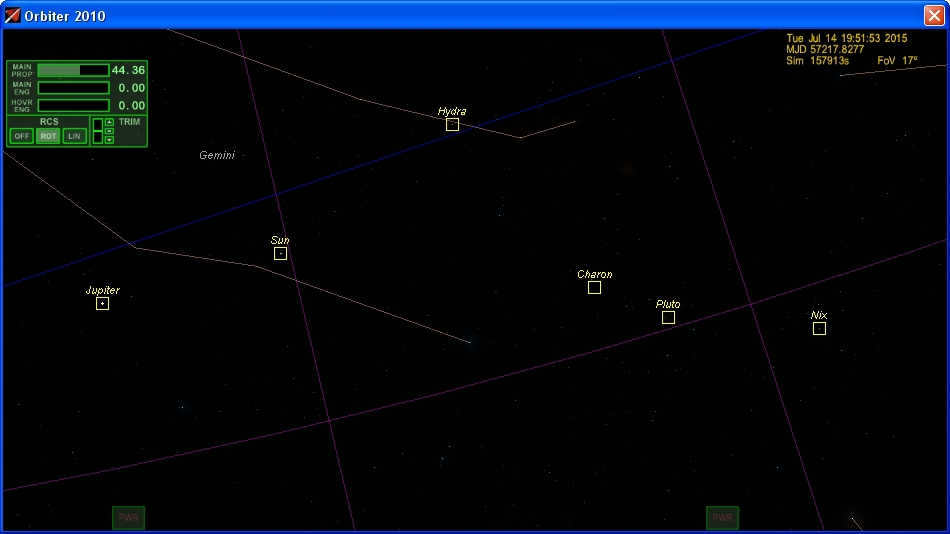
Approximately 20 hours after Coordinated Universal Time (UTC) on July 14, New Horizons is expected to transmit a signal indicating that everything went smoothly, from the area near this location. On our planet, this signal will be received at around 4am UTC.
Some Frequently Asked Questions
What should we focus on and what events should we anticipate?
The most significant event that will be made public is the “home call” around 4 am Moscow time. This will indicate that New Horizons has not encountered any collisions, has not entered safe mode, and no other incidents have occurred.
When can we expect to see new unique photos?
We can expect to see photos of Pluto from the closest approach location on July 15, and photos of Charon on the 16th. The first color photos are expected around July 18. The transmission of all collected data will take several months, with completion planned for early 2016.
Why is the connection so slow?
The speed of communication is determined by the ability to distinguish between signal and noise. To put it simply, if the transmitter power is lower, the antenna is smaller, and the distance is greater, the data transmission speed needs to be slower in order to be received correctly. If we had an antenna the size of the Arecibo telescope and powered by a nuclear power plant, we would be able to transmit data at gigabits, if not terabits per second. However, the “New Horizons” spacecraft only has a 2 meter diameter antenna and an on-board power source of 200 watts, so it has to settle for much lower speeds.
You can also refer to Shannon’s theorems for a channel with noise.
What is the next plan for New Horizons?
Following the successful flyby of Pluto, the New Horizons mission will now search for a suitable object in the Kuiper belt. This search is quite specific, as the trajectory requires a target within a very narrow cone. For example, Erida has been determined to be an unsuitable target.
- There are several options for future gravitational maneuvers or adjustments to the spacecraft’s motion, which may take several decades.
- Alternative propulsion methods, such as nuclear engines or a combination of nuclear reactors and ion engines, may be considered.
- Using a heavier launch vehicle could allow for a larger initial mass to be placed into Earth orbit, providing more options for the mission.
Where can we find Pluto now?
If you observe the sky after midnight and visualize a line connecting Deneb and Altair, you will find Pluto situated low above the horizon in the constellation Sagittarius. With a stellar magnitude of 14, Pluto cannot be observed with amateur telescopes.
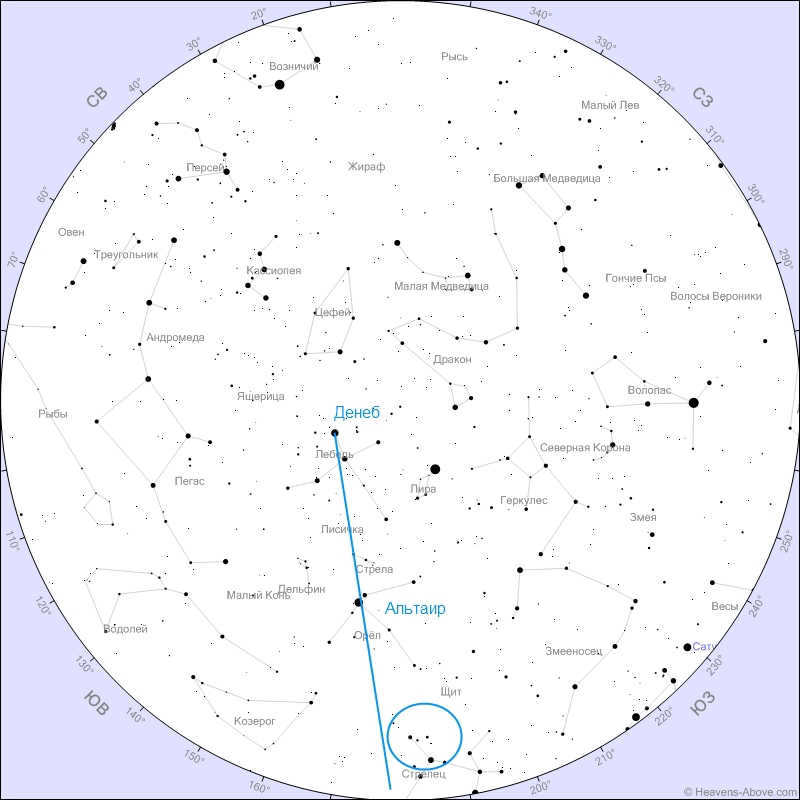
Other publications about virtual space travel can be found under the Orbiter tag.
The preparation of this publication involved the use of materials from the magazine “News of Cosmonautics.” The magazine is now available in both paper and digital form through the “VipishiSmart: digital press” app, which can be downloaded on iOS and Android.
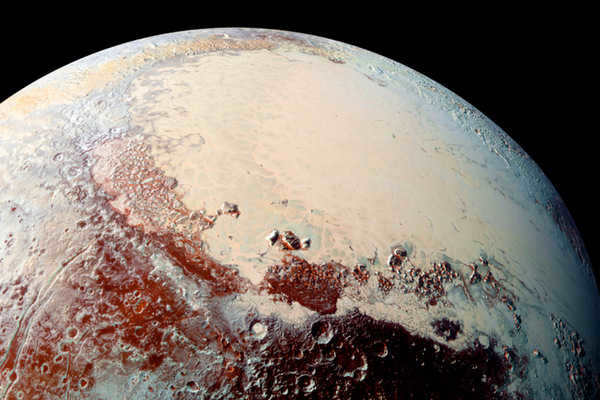
Quantum Supremacy Cycle
In April, the Washington, D.C.-based Philosophical Society hosted a discussion between Alan Stern, the science director of the New Horizons mission, and Ron Akers, the former president of the International Astronomical Union (IAU), on the terminology surrounding planets. The debate focused on the official definitions of planet and dwarf planet that were adopted during the XXVI IAU Assembly in August 2006. Following this decision, Pluto, which the New Horizons spacecraft visited in January 2006, was reclassified as a dwarf planet, a classification that Stern disagreed with. "Lenta.ru" provides an overview of the scientists’ discussion and the arguments put forth by each side.
“The contrast between planets and non-planets is remarkable”
As per the decision of the International Astronomical Union (IAU), a planet can be designated as such if it meets three criteria: (a) it orbits the Sun without being a satellite of another celestial body, (b) it has enough mass to form a spherical shape due to its own gravitational force, and (c) it has cleared its orbit of any other celestial bodies, such as by capturing them as satellites. According to this definition, only eight celestial bodies are officially classified as planets – Mercury, Venus, Earth, Mars, Jupiter, Saturn, Uranus, and Neptune. Pluto, which fails to meet condition (c), is classified as a dwarf planet. According to the IAU, a celestial body only needs to satisfy conditions (a) and (b) to be classified as a dwarf planet. The key distinction between a planet and a dwarf planet is that the former has cleared its neighborhood of any extraneous celestial bodies, while the latter has not.
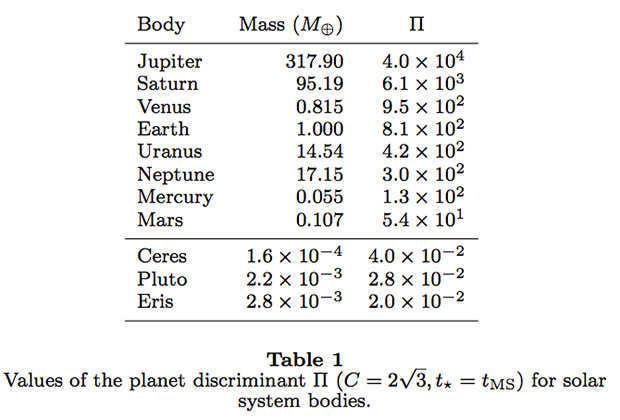
However, the technique developed by the scientist from California enables the classification of 99 percent of planets and exoplanets as planets. Within the confines of our solar system, the approach devised by Margot designates Ceres, Pluto, and Eridu, among others, as dwarf planets. “The distinction between planets and non-planets is remarkable. This stark contrast implies a fundamental divergence in the formation processes of these celestial bodies, and the mere fact that they are categorized reveals something profound about our understanding of the natural world,” the scientist declared in July 2015.
However, if we set aside the discussion among the speakers regarding the decision-making process in August 2006 (where there were not as many professional geophysicists present at the conference as the scientific director of New Horizons would have preferred), as well as Akers’ historical digression about the history of astronomy (he mentioned, in particular, that for a long time after Pluto’s discovery in February 1930, its size was believed to be similar to that of Earth), it is important to highlight Akers’ viewpoint that the decision made by the IAU in August 2006, stating that Pluto’s size is comparable to that of Earth, does not align with the planet’s actual size.
“The classification of a celestial body as a planet is determined by its surroundings.”
In the debate criticizing the decision of the International Astronomical Union (IAU), Stern repeatedly used the argument that the definition of a planet now depends on its environment. According to Stern, this may seem absurd at first glance. He argues that if the Earth were placed in the Oort cloud, it would no longer be considered a planet because, according to Margo’s work, the mass of a planet should increase as it moves away from its parent star. As an example, the scientific director of the New Horizons mission mentioned that a mountain does not cease to be a mountain just because it is part of a mountain range. Expanding on the idea of the Earth’s classification as a planet or dwarf planet based on its distance from the Sun, as suggested by the Margot criterion, Stern also noted that the size of a celestial body is not important.
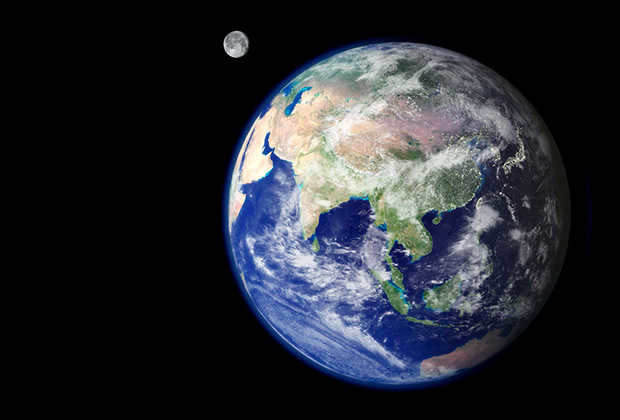
Instead of adopting the definition given by the IAU, the science director of New Horizons actually put forward a different interpretation of what constitutes a planet. According to Stern, a planet should be defined as a celestial body that has enough mass to form a spherical shape and has never undergone thermonuclear reactions. As a result, Stern automatically suggests classifying exoplanets as planets and removes the third condition (c) included in the IAU’s definition. Stern had previously suggested calling the moons of planets, which are similar in size to the planets themselves, satellite planets.
“Two interpretations.”
It is important to note that during the discussion, Akers and Stern reached a sort of agreement, acknowledging that they were actually discussing “two interpretations” based on different approaches. The IAU’s stance favors a “dynamic interpretation,” which gives priority to orbital dynamics (taking into account how a particular celestial body interacts with other celestial bodies around it), while the perspective of the head of New Horizons suggests using a “geophysical interpretation” of a planet (based on the internal properties of the celestial body). Akers also acknowledged the valid point that the definition of planets could be expanded to include exoplanets. He believes that the IAU may make such a decision in the future.
However, it is impossible to disregard the fact that during the debate, Akers’ position faced much more criticism compared to Stern’s (more details on this matter below). Nevertheless, the former IAU leader managed to present the controversial perspective of the “geophysical definition” advocate when it comes to considering the surroundings of a celestial body in order to determine its planetary status. Specifically, Akers pointed out that a mountain in the ocean would more likely be considered an island. Based on this viewpoint, the hypothetical Planet X, whose existence is claimed by astronomers Mike Brown and Konstantin Batygin from the California Institute of Technology in Pasadena (USA), should still be classified as a planet. According to the calculations of these scientists, Planet X is believed to be responsible for several observed orbital parameters of dwarf planets beyond Neptune’s orbit. If confirmed, Planet X would become the actual ninth planet in the Solar System, replacing Pluto, which unexpectedly transitioned into a dwarf planet.
It is worth mentioning the panelists’ perspective on the professional background of the scientists who supported the current definition of the planet in August 2006. Akers argues that the decision made by experts in different areas of astronomy should not be limited to geophysicists, as Stern asserts.
The discussion among scientists, which took place at the Philosophical Society of Washington, regarding the legitimacy of the definition of a planet, as established by the International Astronomical Union (IAU) in August 2006, was commented on by Dr. Dmitry Vibe, a doctor of physical and mathematical sciences and the head of the Department of Physics and Stellar Evolution at the Institute of Astronomy of the Russian Academy of Sciences (INASAN), on the website “Lenta.ru”.
“First and foremost, I fail to comprehend the rationale behind the need for an “official” definition of the term “planet”. Especially when considering that all other astronomical entities – such as galaxies, stars, and nebulae – exist perfectly well without precise definitions, and this lack of definitions does not result in any confusion,” states the astrophysicist.
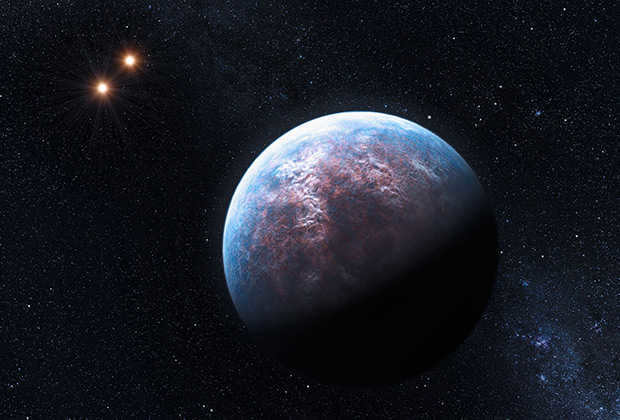
Contrarily, Vibe argues that the IAU definition is susceptible to criticism due to its level of detail, while “Stern focused primarily on exposing the shortcomings of the IAU definition.” “His definition, on the other hand, lacks these flaws, but ironically, the absence of flaws itself presents a significant flaw. According to Stern, let’s consider anything spherical and lacking thermonuclear reactions as a planet. So, why not? What’s the harm in that? By the way, regarding Stern’s definition, one of my colleagues made a joke that it doesn’t align with Earth since there have been thermonuclear reactions (in bomb explosions) on our planet,” the scientist remarks.
The astrophysicist from Russia finds it logical to establish definitions for planets based on their origin. “In some way, perhaps: a planet is defined as a celestial body that orbits or revolves around a star, forming later than the star within a disk of gas and dust, possessing enough mass to assume a spherical shape, and capable of eventually clearing its orbit of material from the original protoplanetary disk. This definition is quite sound, with the only drawback being that it is often impossible or extremely challenging to verify,” Vibe concludes.
Vibe further emphasizes that any definition of a planet is, in reality, “unnecessary”.
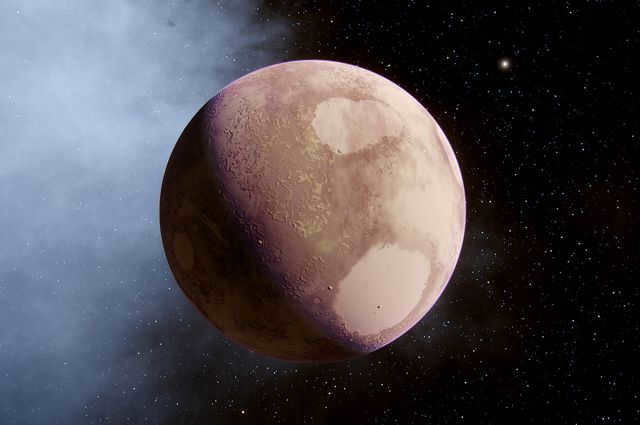
During the summer of 2006, a remarkable event took place in the field of astronomy. A unique occurrence unfolded, altering the course of history. For the very first time, instead of witnessing an increase in the number of planets within our solar system, a decrease was observed. This transformation was not the result of a catastrophic cosmic event, but rather a bureaucratic decision.
In the 1840s, a French mathematician named Urbain Leverrier made calculations that successfully predicted the discovery of the planet Neptune. Moving forward to the early 20th century, another mathematician named Percival Lovell developed a mathematical model. This model explained the irregularities observed in the orbits of Uranus and Neptune, suggesting the existence of an unidentified planet beyond Neptune’s orbit. This hypothetical celestial body was given the name “planet X”.
Despite years of hard work, Lovell himself was never able to directly observe the planet he had predicted.
Fortunately for Clyde Tombaugh, a 24-year-old farmer’s son, luck was on his side. Despite not having a college education, Tombaugh, an avid astronomy enthusiast, was offered a full-time position as a laboratory photographer at the Lovell Observatory in January 1930. It was during his time at the observatory that Tombaugh made an incredible discovery – three photographs that captured an object that closely matched the characteristics of the elusive “planet X”.
On March 13, 1930, which also happened to be the 75th anniversary of Percival Lovell’s birth, the observatory officially announced the discovery of “planet X”. Tombaugh was hailed as the discoverer of the planet by the international astronomical community.
Following this momentous breakthrough, Clyde pursued higher education at college and subsequently continued his academic pursuits at the esteemed University of Kansas. Thereafter, he dedicated the entirety of his existence to the field of astronomy. Throughout his illustrious career, he unearthed numerous celestial entities, encompassing prominent asteroids and comets. Nevertheless, the unearthing of Pluto remained the pinnacle achievement of his scientific endeavors.
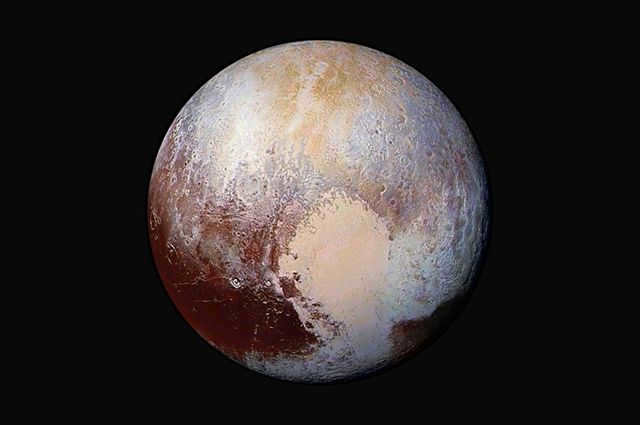
Clyde Tombaugh, who made significant contributions to science, passed away on January 17, 1997, just a few weeks before his 91st birthday. He left behind a lasting legacy and a family that includes two children, five grandchildren, and eight great-grandchildren.
However, from the moment it was discovered, Pluto has been under suspicion. Throughout the mid-20th century, scientists constantly revised their estimate of Pluto’s mass, leading them to question whether it could be the elusive “Planet X” responsible for disturbances to Uranus and Neptune.
The Voyager 2 mission provided new data that revised the mass of Neptune downward by 0.5%. Using this information, scientists constructed a model that suggested there was no “Planet X” and that previous predictions were based on inaccurate calculations.
This led to the question: if not a planet, then what is Pluto?
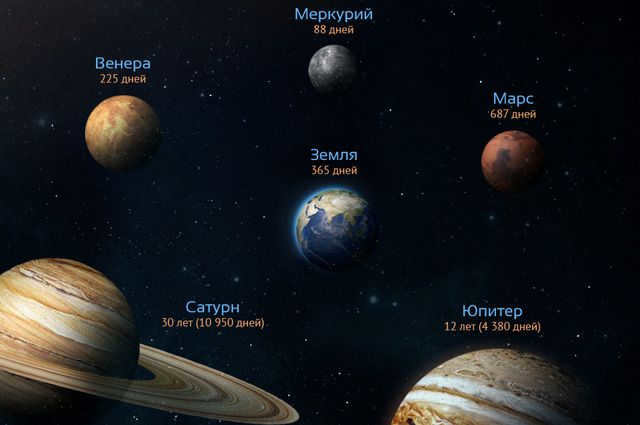
Even back when Tombaugh first discovered it, there were already discussions among scientists about the potential existence of a “transneptunian population” – an entire belt of celestial bodies, similar to the asteroid belt found between Mars and Jupiter, but on a much larger scale. It has been theorized that Pluto is one of the biggest members of this newly discovered belt.
Dr. Kuiper’s belt, a skeptic of its existence
American astronomer Gerard Kuiper was the first to provide a detailed description of what the belt might resemble back in 1951. However, Kuiper was of the belief that it formed during the early stages of the solar system’s development and eventually dissipated.
It wasn’t until the late 1980s that David Jewett and Jane Lu initiated practical research on locating objects within the hypothetical belt. On August 30, 1992, they unveiled the discovery of the celestial body (15760) 1992 QB1, marking the inaugural find within this newly identified belt. On January 31, 2018, the object was officially named Albion.
The belt was christened the Kuiper belt, despite the astronomer’s personal doubts regarding its continued existence.
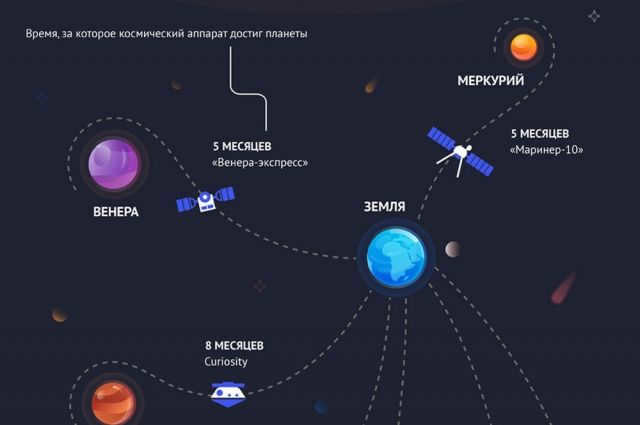
The asteroid belt also unveiled a celestial body known as Erida, which is larger than Pluto. Erida was discovered in 2005 and was initially considered the tenth planet in our solar system.
The reevaluation of Pluto by astronomers
However, in August 2006, the XXVI Assembly of the International Astronomical Union took place. During this gathering of scientists in Prague, a decision was made to redefine the term “planet”.
According to the new criteria set forth, a celestial body in the Solar System can only be classified as a planet if it meets the following conditions:
- It must orbit the Sun and not be a satellite of another planet.
- It must have sufficient mass to maintain a spherical shape due to its own gravitational forces.
- To meet this requirement, a celestial body must ensure that there are no other objects of similar size in its vicinity, except for its own satellites or those affected by its gravitational pull.
- It must clear the neighborhood of its orbit (that is, it must be gravitationally dominant and there must be no other bodies of comparable size nearby except its own satellites or those under its gravitational influence).
However, Pluto fails to satisfy this condition, as its mass is only 7% of the total mass of all objects in the Kuiper Belt.

Simultaneously, the Assembly implemented the expression “dwarf planet,” and Pluto was bestowed with this classification alongside the trans-Neptunian celestial bodies Erida, Sedna, Makemake, Haumea, and Ceres within the asteroid belt.
The action of “plutoing”
It is worth mentioning that there is a lack of consensus in the field of astronomy. For instance, in 2019, the director of NASA, Jim Bridenstine, stated at the International Aeronautical Congress his desire to reinstate Pluto as a planet: “I would like to emphasize that, as the head of NASA, I firmly believe that Pluto deserves the designation of a planet. Some argue that a celestial body must clear its solar orbit in order to be classified as a planet. However, if we adhere to this definition, we would have to relegate all planets to the category of dwarf planets, as there is no celestial body that completely clears its orbit. I believe that the classification of a planet should be based on its inherent value rather than on constantly changing parameters, such as orbit dynamics.”
The American Dialectological Society has acknowledged the verb “to pluto” as a newly coined term for the year 2006. It signifies “to lower the rank or value of someone or something,” similar to what happened to the former celestial body known as Pluto.
Illinois upholds Pluto’s planetary status
Leading the charge in the protests were the states of Illinois and New Mexico, both significant to Clyde Tombaugh, the discoverer of Pluto.
On March 13, 2007, the New Mexico legislature unanimously decided that Pluto would forever be recognized as a planet in their state’s sky as a tribute to Tombaugh. Following suit, on February 26, 2009, the Illinois Senate passed a similar resolution, asserting that Pluto had been “unfairly demoted to a dwarf planet.”
Astronomer Michael Brown, who is credited with the discovery of Eridu, once stated: “In spite of the somewhat chaotic process, we managed to arrive at the answer. It was a long journey, but eventually science will correct itself, even if there were intense emotions involved in the discussion.”
There is a possibility that in the future, the astronomical classification will undergo further changes, potentially leading to a new status for Pluto.
Ultimately, Pluto itself is indifferent to the decisions made by a civilization that is distant from its celestial realm.

What is the reason for the need to revise textbooks? There is a strong public reaction to the decision made by the International Astronomical Union (IAU) on August 24, 2006, to redefine Pluto as a dwarf planet instead of a planet. This decision has forever changed our understanding of the solar system itself.
What was the reason behind this?
Even after several years, there are still numerous individuals who fail to comprehend the significance of the controversy surrounding Pluto’s demotion from its previous status as a “planet.” However, the conversion of the solar system from nine planets to eight was a gradual process, serving as a testament to one of science’s most powerful attributes – the capacity to revise established definitions in response to emerging evidence.
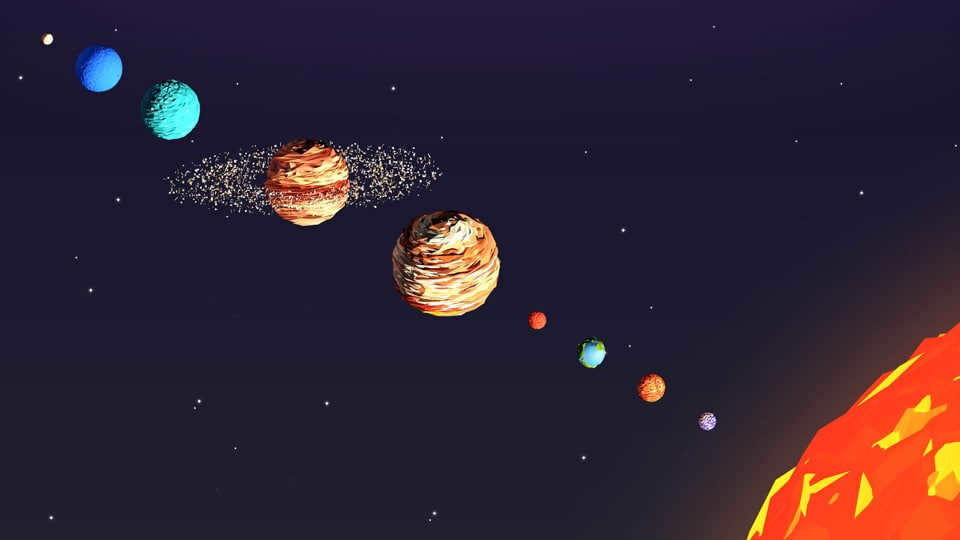
What is the definition of a planet?
The term “planet” has its origins in ancient times and is derived from the Greek word plantes, which translates to “wandering star.” The five well-known planets, Mercury, Venus, Mars, Jupiter, and Saturn, are easily observable with the naked eye due to their distinctive brightness in the night sky when compared to distant stars. With the aid of telescopes, astronomers have identified two additional planets, Uranus and Neptune. Nevertheless, these two planets emit such a dim light that they cannot be perceived without the assistance of a telescope.
Seeking Out Pluto
The discovery of Pluto occurred in 1930, as astronomer Clyde Tombaugh from Lowell Observatory was analyzing photographic images of the night sky taken on various occasions. During this process, Tombaugh noticed a minuscule dot moving back and forth amongst a backdrop of stars, ultimately leading to the classification of this celestial body as a planet. Upon its initial identification, Pluto was regarded as an anomaly due to its highly elliptical orbit, which differs greatly from the circular paths followed by other planets. In fact, it has even ventured closer to the Sun than Neptune has during its 248-year expedition around our host star.
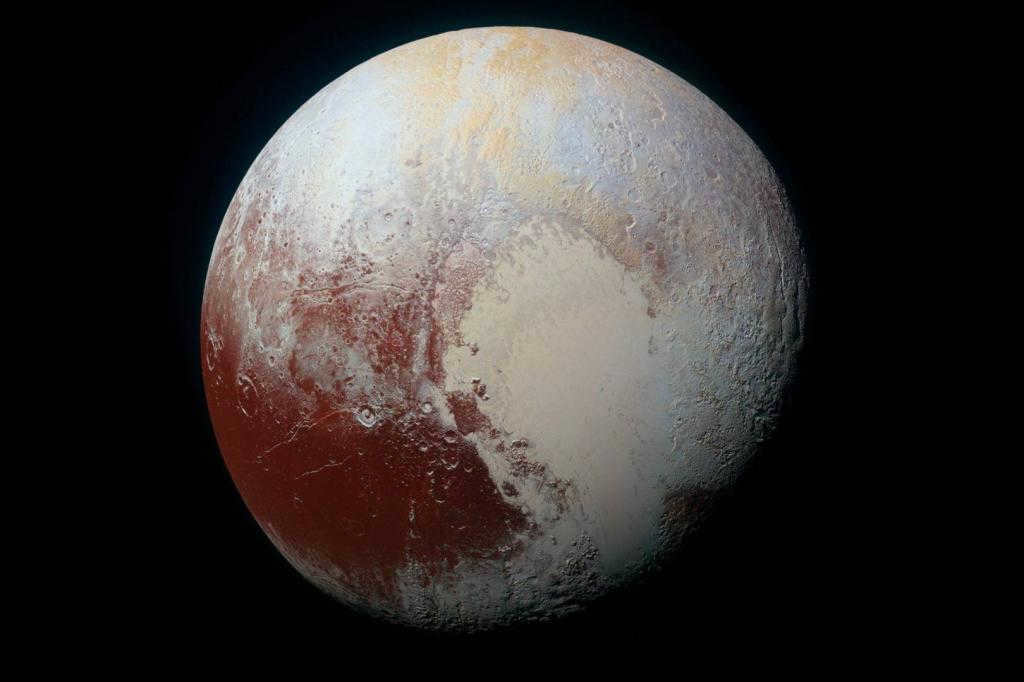
An icy world experiencing weightlessness
In the year 1992, scientists made a remarkable discovery – the first Kuiper Belt object known as 1992 QB1. This minuscule entity was found to be orbiting in close proximity to Pluto. Subsequently, numerous similar objects were identified, collectively forming a belt of small icy worlds comparable to the asteroid belt positioned between Mars and Jupiter. Despite these findings, Pluto continued to reign as the dominant figure within this region. However, in July 2005, astronomers stumbled upon another distant entity called Eris (also known as Erida), which initially appeared to be even larger than Pluto itself.
As a result, researchers were faced with numerous questions. If Pluto was classified as a planet, did that mean Erida should be considered one as well? Furthermore, what about all the other icy bodies located within the Kuiper belt? Where does the boundary lie when it comes to distinguishing a celestial body as a planet? Consequently, a term that was once considered simple and straightforward suddenly became perplexingly elusive.
An intense discussion arose, with numerous fresh suggestions for defining the concept of “planet”.
“Whenever we believe we are coming to an agreement, somebody utters something that clearly demonstrates the opposite,” stated Brian Marsden, a member of the IAU Executive Committee in charge of designating the status of “planet”.
A year later, astronomers were no closer to finding a solution. The problem loomed over the ICA General Assembly meeting in Prague in 2006. During the conference, scientists dedicated eight days to resolving the dispute. They ultimately settled on four main suggestions. One proposal aimed to expand the number of planets in the solar system to 12, including Ceres (the largest asteroid) and Charon (Pluto’s satellite). However, astronomer Mike Brown, who discovered Erida, argued that this would create chaos within the system.
At the conclusion of the Prague conference, the 424 astronomers who made it through the session decided to establish three additional classifications for entities within the solar system. However, since that time, only Mercury among the minor planets has held onto this designation. In contrast, both Pluto and its counterparts have been reclassified as dwarf planets. As for all other diminutive celestial bodies revolving around the Sun, they will now be referred to as “small bodies” in the Solar System.
Continuation of the space drama
The decision, however, was not taken lightly by the professional community. Alan Stern, the head of NASA’s New Horizons mission, which successfully flew past Pluto in 2015, expressed his disappointment and stated, “I am ashamed of the field of astronomy.” He further emphasized that the vote was participated in by less than 5 percent of the global astronomical community, which consists of approximately 10,000 astronomers.
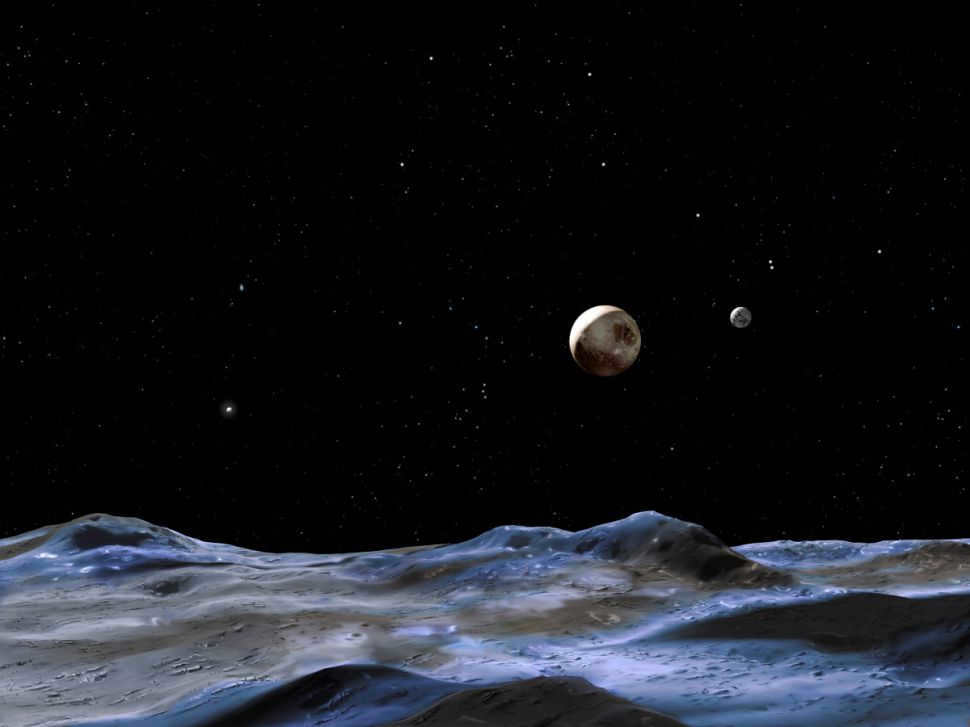
New categorization systems are constantly being introduced. In 2017, a proposal was put forward that defined a planet as “a spherical object in space that is smaller than a star.” If this definition had been adopted, it would have meant that Pluto would once again be considered a planet, but it would also have included the moon and many other satellites in our solar system, resulting in a total of 110 officially recognized planets.
A year later, Alan Stern, along with fellow planet researcher David Grinspoon, criticized the International Astronomical Union’s definition in an op-ed for the Washington Post. They argued that the definition was hastily accepted and fundamentally flawed, and suggested that astronomers should reevaluate their understanding of what constitutes a planet.





